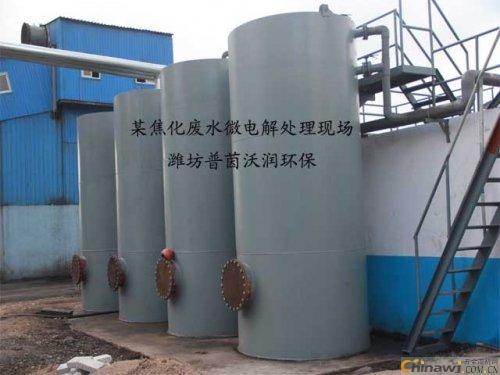The PYWR series of advanced micro-electrolytic fillers is a multi-catalytic oxidation material developed by Puyin Runrun Company to address the challenges of treating organic wastewater that is difficult to biodegrade. This innovative filler is produced using a combination of multi-metal alloy catalysts and high-temperature micropore activation technology. It represents a new generation of non-plate-junction, additive-free micro-electrolytic fillers that offer superior performance in wastewater treatment. When applied, it effectively reduces COD levels, decreases color intensity, enhances biodegradability, and delivers consistent and long-lasting treatment results. Additionally, it prevents common issues such as filler passivation and sludge formation during operation. As a key component of the micro-electrolysis process, this filler ensures continuous and efficient reactions, bringing renewed effectiveness to the treatment of chemical wastewater.
Longpu Yinwo Run Environmental Protection Technology Co., Ltd. stands out as the most professional manufacturer of micro-electrolytic fillers, with a long history of production, high customer satisfaction, and strong repeat purchase rates.
Puyinworun guarantees more than just a product — it offers a proven, reliable water treatment solution backed by a complete technical support system.
1. How does water circulate naturally on Earth?
Approximately 71% of the Earth’s surface is covered by water, which is why our planet is often referred to as a "blue marble." However, only about 2.5% of this water is freshwater suitable for human use, and most of that is locked in glaciers and ice caps. In fact, over 70% of the world's fresh water is stored in polar ice, leaving less than 1% available for direct human consumption.
Natural water cycles are driven by solar energy and gravity, involving processes like precipitation, runoff, infiltration, and evaporation. These mechanisms create a continuous flow of water across the globe, forming various natural water sources.
To meet the demands of daily life and industrial activities, society extracts large volumes of water from these natural sources. After use, this water becomes domestic sewage or industrial wastewater, which is eventually discharged back into natural water bodies. This cycle, known as the social water cycle, plays a crucial role in sustaining human activities.
Although the volume of water used in the social cycle is small compared to the total amount of water on Earth, its impact on water quality is significant. Water pollution caused by industrial and municipal waste has become one of the major environmental challenges. Therefore, the goal of water treatment engineering is to manage and reduce these imbalances, ensuring the sustainable flow of both clean water and wastewater in the social cycle.
[Introduction to Micro-Electrolytic Fillers]
The micro-electrolysis process has evolved significantly over time, offering numerous benefits in wastewater treatment. Some of the main advantages include:
(1) Long service life — the filler can last up to 6 years with minimal maintenance. It can be replenished periodically without needing full replacement.
(2) Versatile application — it can treat multiple types of pollutants simultaneously, making it ideal for compact systems that are easy to scale and implement in industrial settings.
(3) Broad applicability — this technology is widely used in industries such as textile dyeing, electroplating, petrochemicals, coking, nitrobenzene, aniline, PCB manufacturing, silicone, livestock, rubber processing, and more.
(4) Excellent treatment efficiency — real-world applications have demonstrated effective removal of various contaminants.

Smart Mirror,Ceramic Glass,Smart Silver Mirror,Smart Bathroom Mirror
SHANDONG TOP LEADER GLASS CO.,LTD , https://www.topleaderglass.com